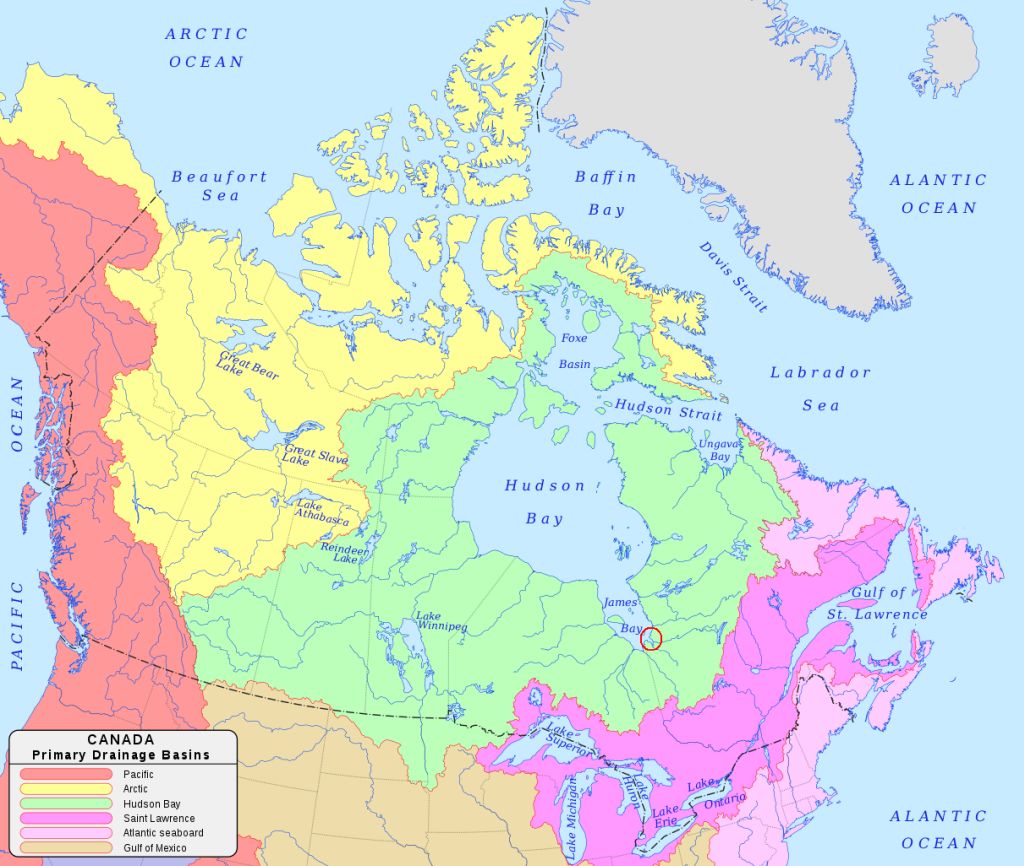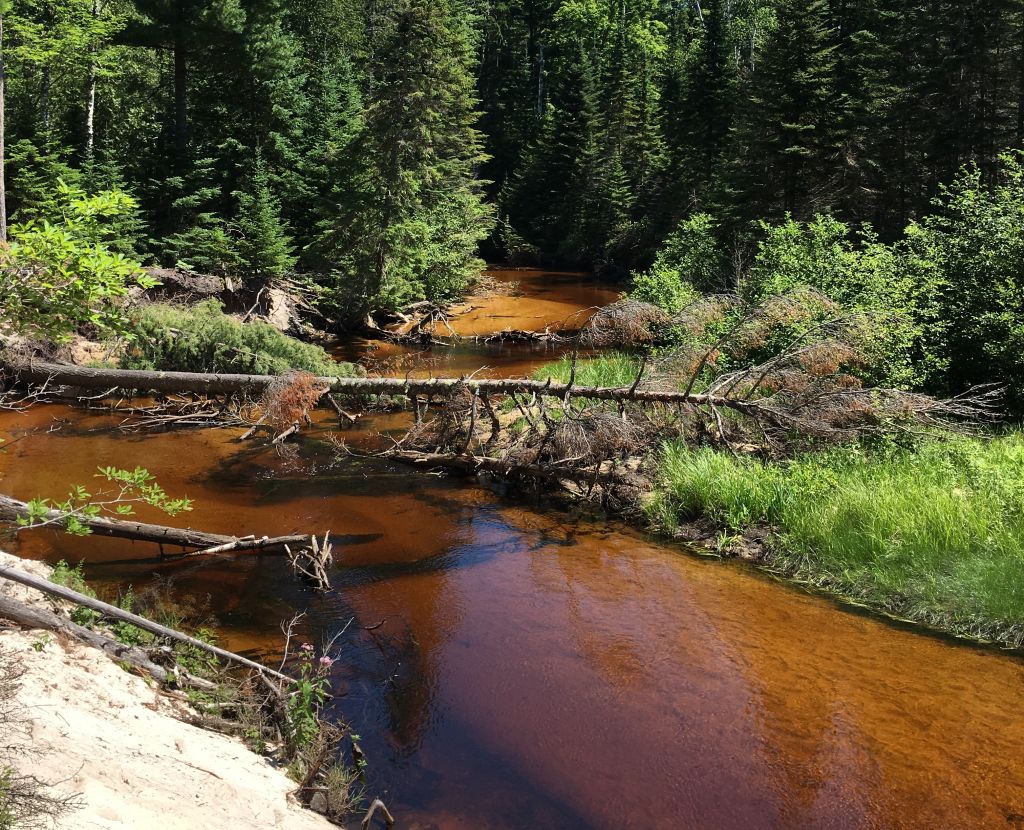
15 October 2023
“Some tea with your river, Sir?” asks the caption on the satellite photo below where Rupert Bay meets James Bay in Quebec, Canada. James Bay’s incoming tide is pushing Rupert Bay’s tea-colored water upstream.
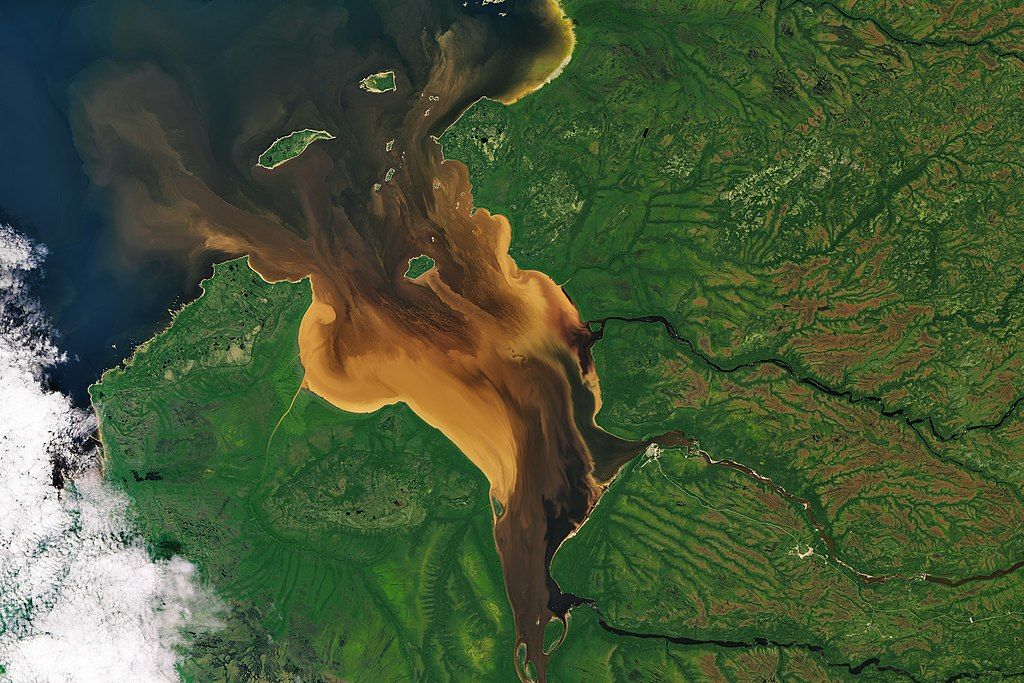
Tea-colored water is good.
In woodland and wetland settings, tea-colored water indicates that natural plant and water processes are occurring.
Frequently, water in streams and rivers becomes tea-colored from naturally occurring tannins, a chemical found in many plants around the world. The tannins can leach out of plants and plant debris and into groundwater, lakes, rivers, and streams. Although they can make the water more acidic, it’s important to note, tannins are not harmful to fish and wildlife.
This process occurs in many waterways that run through wooded areas and wetlands with high levels of plant mass and organic matter. Because there is always water flowing through these areas, tannins leach out of plants into the water, making it appear tea-colored.
— Mainelakes.org: Why is the Water Tea-colored?
Tannins leach from all kinds of plant debris, especially soaked bark, leaves and pine needles in the north woods. There are tannins in this magnified Woody Dicot Stem: Tannins in Early First Year Tilia. Its caption reads: “Many cells in the periderm, cortex and pith contain dark staining tannins.”
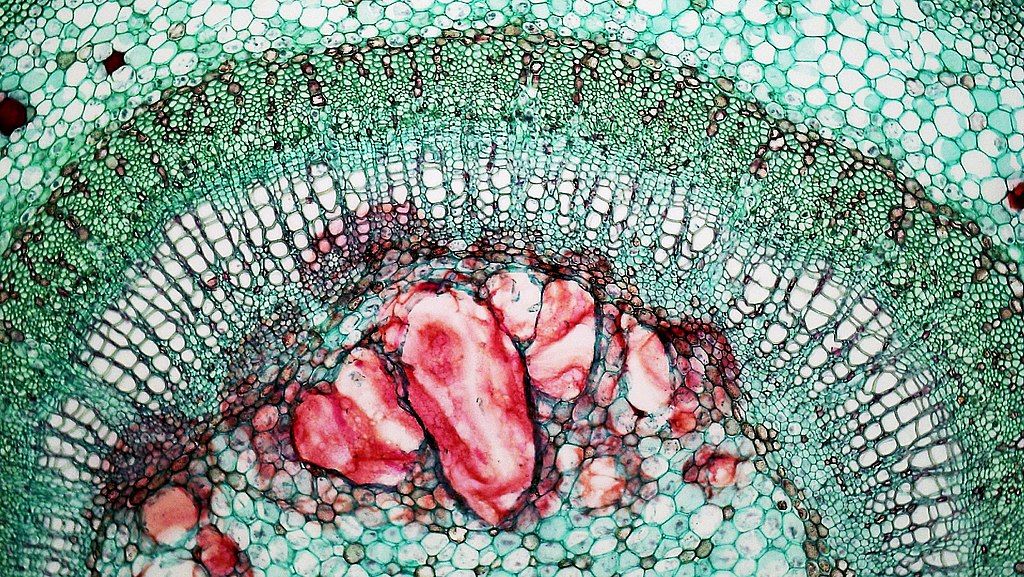
Leaves made these tannin stains on pavement.
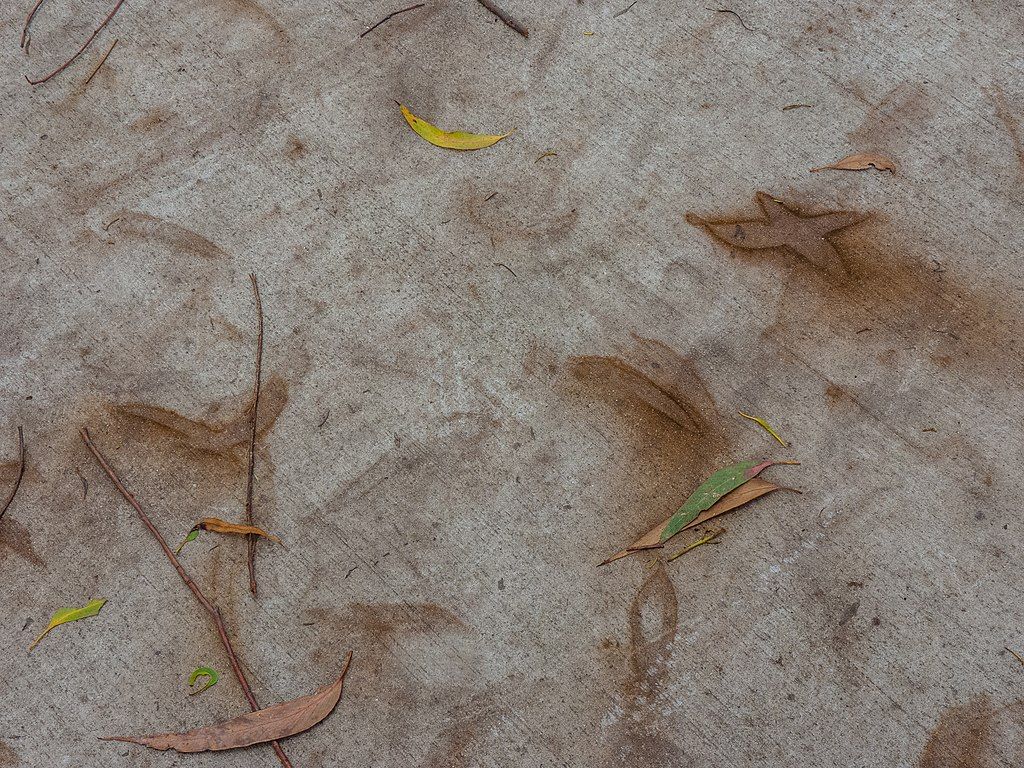
There are tea-colored creeks in northeastern Pennsylvania such as this one in Monroe County.
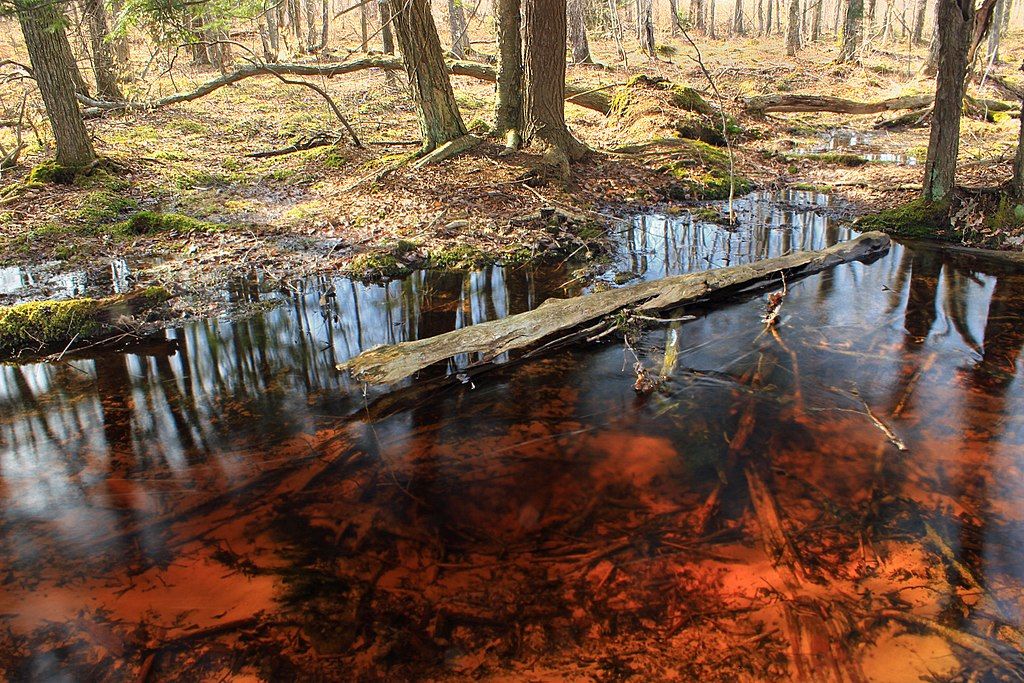
And there are some special lakes on Florida’s Panhandle coast where the tea-colored water flows into the Gulf of Mexico. This video describes the dune lakes of Walton County.
Tannins are OK to drink though they may not taste good. In fact, it’s the tannins in tea leaves that make the beverage tea-colored.
Orange water deposits are bad.
Bright orange deposits are bad, even when the water is clear. In western Pennsylvania the orange color comes from abandoned coal mine drainage. Here the outflow of a polluted culverted stream dumps into Chartiers Creek near Bridgeville. Yuk!
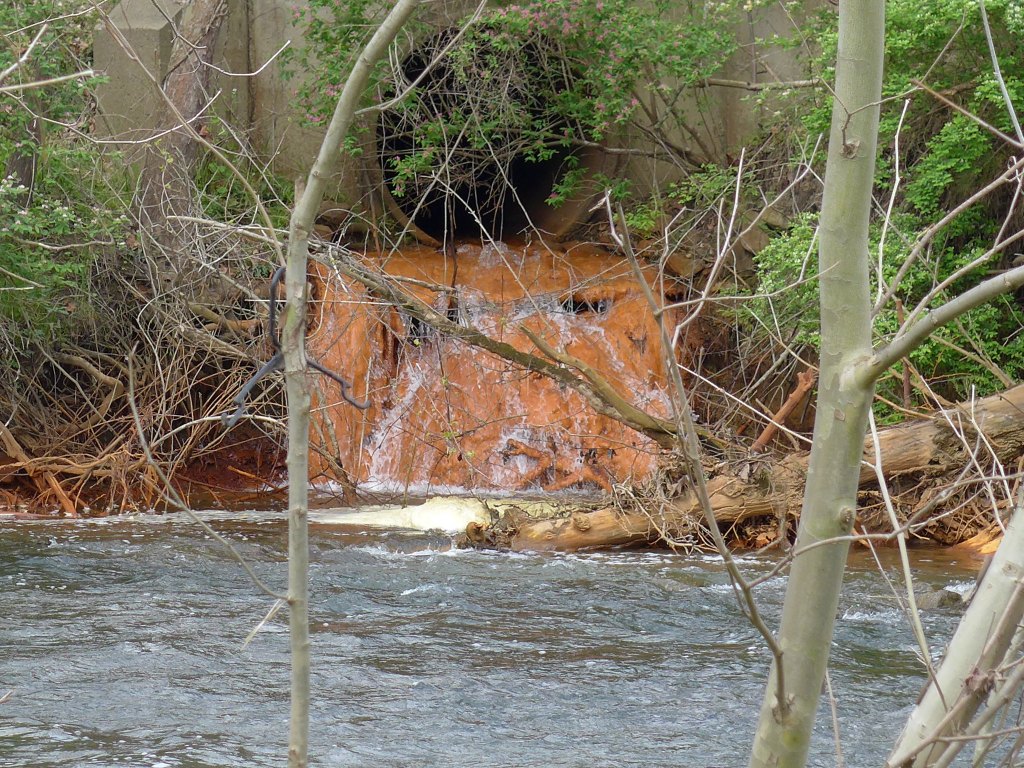
Blacklick Creek in Cambria County, PA is another example.
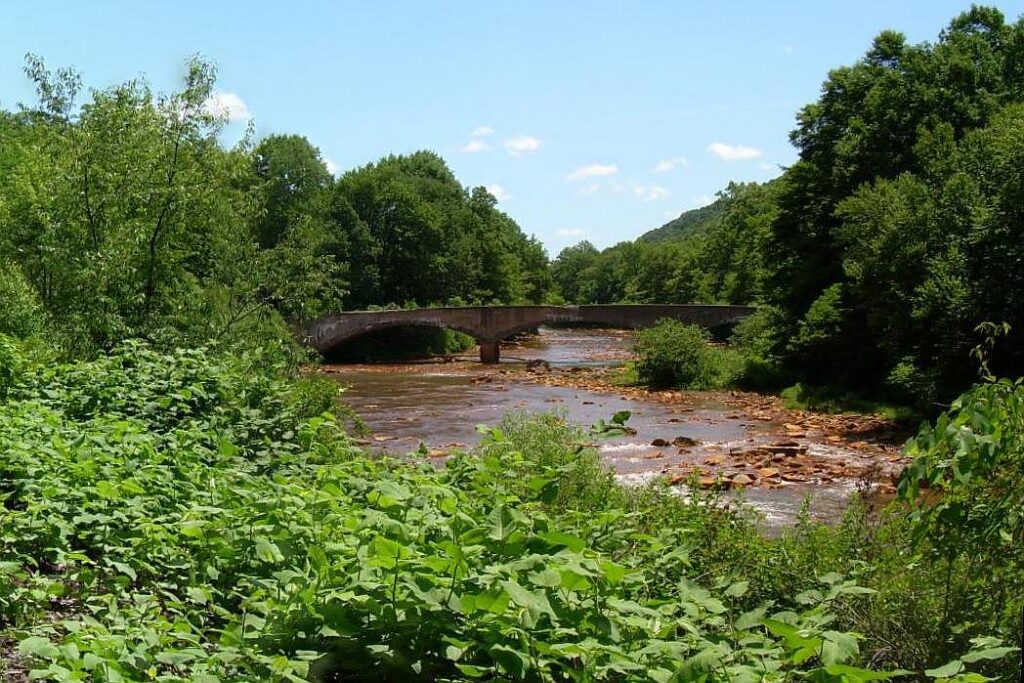
Don’t worry if the water is tea-colored.
Do worry if you see bright orange deposits. In western PA our orange creeks and streams are a case of Water Everywhere, But Not a Drop to Drink.
(credits are in the captions; click the links to see the originals)
p.s. GEOGRAPHY! Though far inland, James Bay is tidal because it is the southern tip of Hudson Bay which connects to the Atlantic Ocean. This watershed map shows Hudson Bay watershed in green. Note the tiny red circle I added for the location of Rupert Bay.
